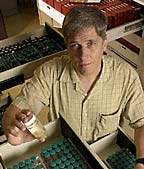Parasitology, Harold W. Manter Laboratory of

Scott L. Gardner Publications
Document Type
Article
Date of this Version
Spring 2020
Citation
WCSA Journal (2020) 1(1): 1-10
Also available at https://wcsajournal.com/wp-content/uploads/2020/05/Volume-1-Nb1-WCSA-Journal-Editors-Choice-Article-1-Brooks.pdf
Abstract
Introduction
On 30 January 2020, the World Health Organization (WHO) declared a Global Health Emergency of international concern attendant to the emergence and spread of SARS-CoV-2, nearly two months after the first reported emergence of human cases in Wuhan, China. In the subsequent two months, global, national and local health personnel and infrastructures have been overwhelmed, leading to suffering and death for infected people, and the threat of socio-economic instability and potential collapse for humanity as a whole. This shows that our current and traditional mode of coping, anchored in responses after the fact, is not capable of dealing with the crisis of emerging infectious disease. Given all of our technological expertise, why is there an emerging disease crisis, and why are we losing the battle to contain and diminish emerging diseases?
Part of the reason is that the prevailing paradigm explaining the biology of pathogen-host associations (coevolution, evolutionary arms races) has assumed that pathogens must evolve new capacities - special mutations – in order to colonize new hosts and produce emergent disease (e.g. Parrish and Kawaoka, 2005). In this erroneous but broadly prevalent view, the evolution of new capacities creates new opportunities for pathogens. Further, given that mutations are both rare and undirected, the highly specialized nature of pathogen-host relationships should produce an evolutionary firewall limiting dissemination; by those definitions, emergences should be rare (for a historical review see Brooks et al., 2019). Pathogens, however, have become far better at finding us than our traditional understanding predicts. We face considerable risk space for pathogens and disease that directly threaten us, our crops and livestock – through expanding interfaces bringing pathogens and hosts into increasing proximity, exacerbated by environmental disruption and urban density, fueled by globalized trade and travel. We need a new paradigm that explains what we are seeing.
Additional section headers:
The Stockholm Paradigm
The DAMA Protocol
A Sense of Urgency and Long-Term Commitment
References
Included in
Biodiversity Commons, Biology Commons, Ecology and Evolutionary Biology Commons, Parasitology Commons


Comments
Copyright 2020, the authors. Open access material. CC-BY license. Published by the World Complexity Science Academy.